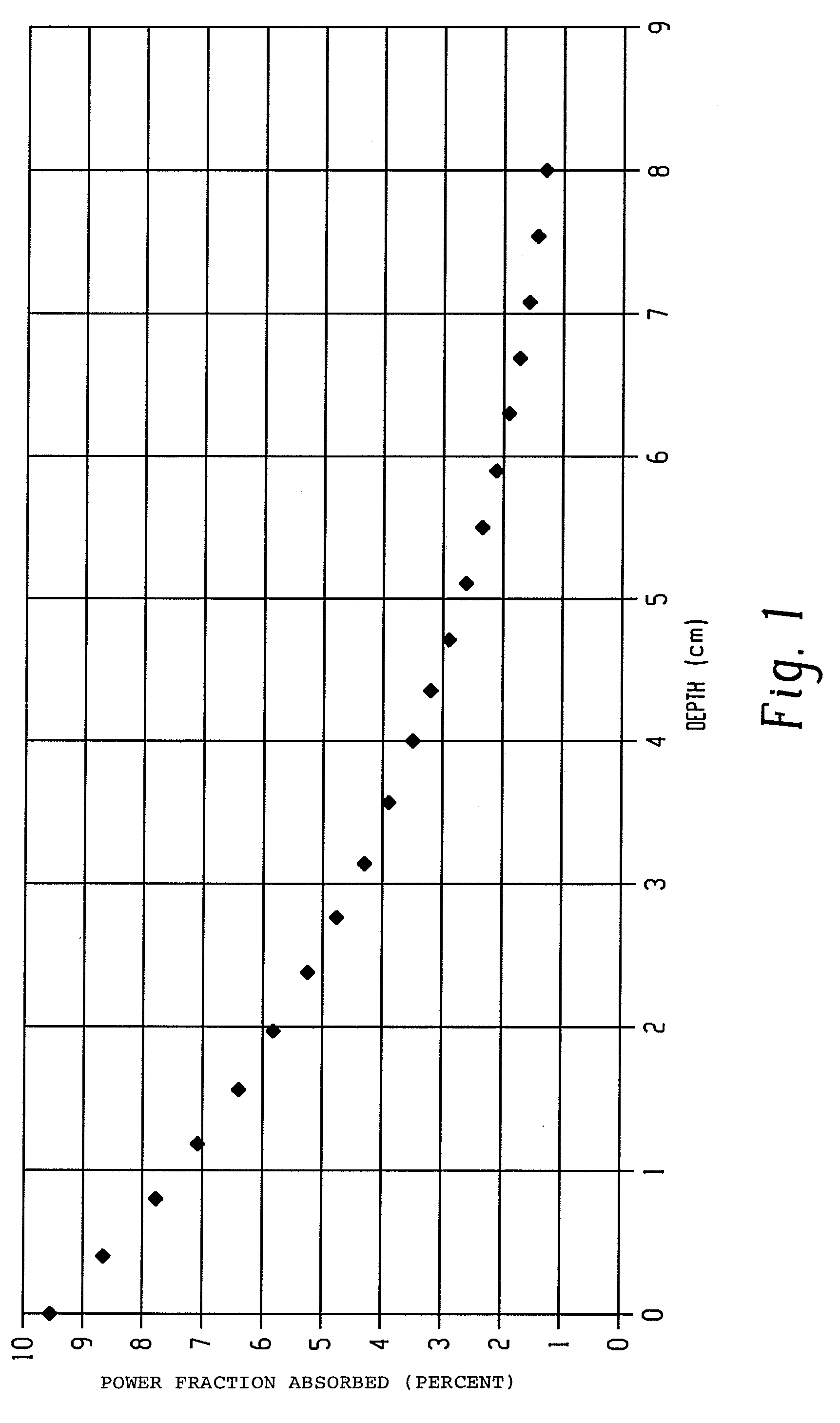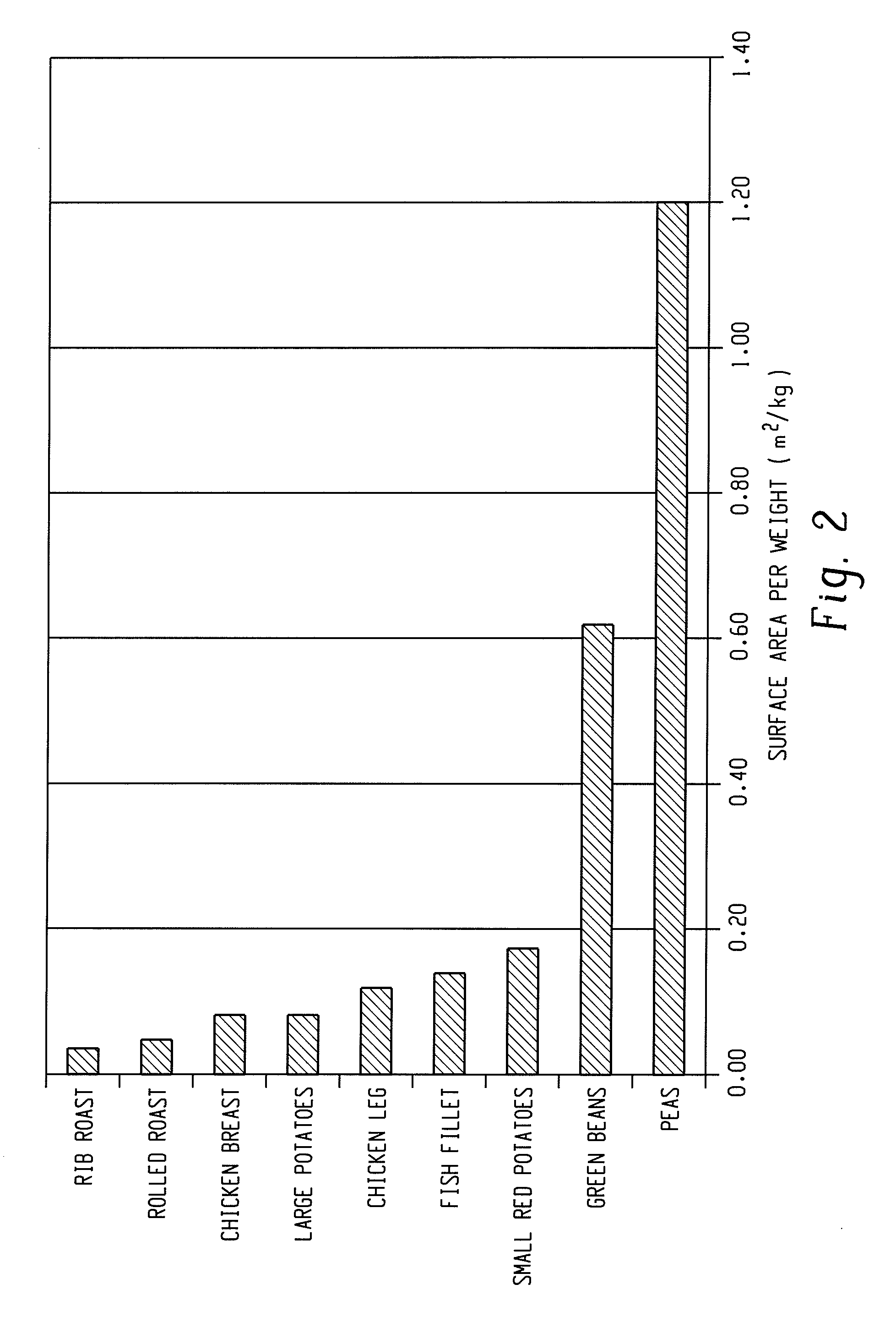Cooking methods for a combi oven
a combi oven and cooking method technology, applied in the field of combi ovens, can solve the problems of energy-intensive transformation from frozen to unfrozen food, long cooking time, and possible
- Summary
- Abstract
- Description
- Claims
- Application Information
AI Technical Summary
Benefits of technology
Problems solved by technology
Method used
Image
Examples
Embodiment Construction
[0017]To overcome earlier deficiencies, a range of cooking algorithms for triple-energy source combination ovens using convection, steam and microwave energy have been developed. These algorithms are used as the bases for oven control systems that use kitchen friendly terms such as foodstuff type, weight, size and quantity for controlling the oven. These control algorithms were developed using theoretical and empirical experience and are effective over a range of practical operation conditions for typical oven designs.
[0018]The algorithms cover oven cavity sizes from 0.1 cubic meters to 1.2 cubic meters with internal cavity single edge dimensions ranging from 500 mm to 2000 mm, oven input power ranging from 6 kW to 60 kW, forced air movement velocities from near zero to 500 cm / sec, steam dew point from lowest possible, a vented oven, to condensing, and microwave input energy from 2.4 kW to 16 kW input power.
[0019]The following technical foundation supports the algorithms that have b...
PUM
 Login to View More
Login to View More Abstract
Description
Claims
Application Information
 Login to View More
Login to View More - R&D
- Intellectual Property
- Life Sciences
- Materials
- Tech Scout
- Unparalleled Data Quality
- Higher Quality Content
- 60% Fewer Hallucinations
Browse by: Latest US Patents, China's latest patents, Technical Efficacy Thesaurus, Application Domain, Technology Topic, Popular Technical Reports.
© 2025 PatSnap. All rights reserved.Legal|Privacy policy|Modern Slavery Act Transparency Statement|Sitemap|About US| Contact US: help@patsnap.com



